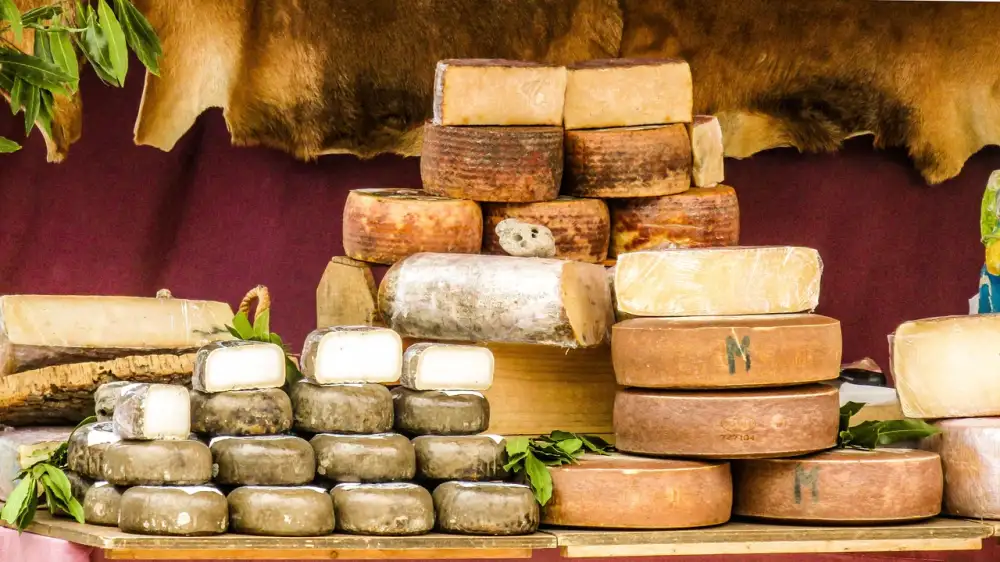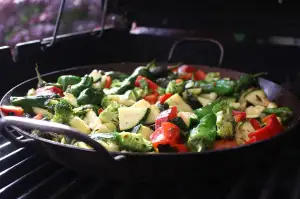Discover the Irresistible Flavors of Spanish Cuisine: A Gastronomic Journey into Authentic Spanish Food

- Introduction to Spanish Food
- Traditional Spanish Dishes
- Famous Spanish Tapas
- Regional Specialties in Spanish Cuisine
- Popular Spanish Ingredients
- Unique Cooking Techniques in Spanish Food
- Spanish Desserts and Pastries
- Spanish Wines and Beverages
- Exploring Spanish Food Culture
- Conclusion: Embracing the Flavors of Spanish Cuisine
Introduction to Spanish Food
Spanish cuisine is a vibrant and diverse tapestry of flavors, colors, and textures that has captivated food enthusiasts around the world. With its rich history and cultural influences from various regions, Spanish food offers a unique gastronomic experience that is both traditional and innovative.
From the bustling streets of Madrid to the sunny shores of Barcelona, Spanish cuisine reflects the country's deep-rooted culinary traditions. Spaniards take great pride in their food, considering it an integral part of their culture and identity.
At the heart of Spanish cuisine lies a love for fresh ingredients and simple yet bold flavors. Olive oil, garlic, tomatoes, and saffron are just a few staples that contribute to the distinctive taste of Spanish dishes.
Whether you're indulging in tapas at a local bar or savoring a hearty paella by the seaside, Spanish food promises to tantalize your taste buds with its robust flavors and aromatic spices. So join us on this gastronomic journey as we delve into the irresistible flavors of authentic Spanish cuisine.
Traditional Spanish Dishes
Spanish cuisine is known for its rich and diverse flavors that have been passed down through generations. Traditional Spanish dishes are a reflection of the country's history, culture, and regional influences. One such dish is paella, a flavorful rice dish cooked with saffron, vegetables, and various meats or seafood. Another iconic dish is gazpacho, a refreshing cold soup made with ripe tomatoes, cucumbers, peppers, garlic, and olive oil. Tortilla Española is a classic Spanish omelette made with eggs, potatoes, and onions. Other popular traditional dishes include cocido madrileño (a hearty meat and vegetable stew), fabada asturiana (a rich bean stew), and pulpo a la gallega (Galician-style octopus). These dishes showcase the simplicity of Spanish cooking while highlighting the use of fresh ingredients and bold flavors.
Famous Spanish Tapas
Tapas are an integral part of Spanish cuisine and have gained international recognition for their diverse flavors and small, bite-sized portions. These appetizers are meant to be shared among friends and are often enjoyed with a glass of wine or a refreshing sangria.
Some of the most famous tapas include patatas bravas, which are crispy fried potatoes topped with a spicy tomato sauce; gambas al ajillo, succulent garlic shrimp cooked in olive oil; and tortilla española, a thick omelette made with eggs, potatoes, and onions.
Another popular tapa is jamón ibérico, thinly sliced cured ham that melts in your mouth. This delicacy is often served on its own or accompanied by crusty bread and ripe tomatoes.
Pulpo a la gallega is another must-try tapa. It consists of tender octopus cooked in olive oil and sprinkled with paprika. The combination of flavors is simply irresistible.
For seafood lovers, boquerones en vinagre is a favorite choice. These marinated anchovies are tangy and packed with flavor. They pair perfectly with a glass of chilled white wine.
In addition to these classics, there are countless other tapas to explore, such as albondigas (meatballs), croquetas (croquettes), and calamares a la romana (deep-fried squid rings). Each region in Spain has its own unique tapas specialties, making it an exciting culinary adventure to try them all.
Regional Specialties in Spanish Cuisine
One of the most fascinating aspects of Spanish cuisine is the diverse range of regional specialties that can be found throughout the country. Each region boasts its own unique flavors and culinary traditions, making Spain a gastronomic paradise for food lovers.
In Catalonia, for example, you'll find the famous dish of Paella, a rice-based dish cooked with saffron and various seafood or meat options. This flavorful dish is a true representation of Catalan cuisine and is enjoyed by locals and visitors alike.
Moving towards the Basque Country, you'll discover pintxos, which are similar to tapas but with a distinct Basque twist. These bite-sized delights are often served on skewers or toothpicks and feature an array of ingredients such as anchovies, cured meats, and local cheeses.
In Andalusia, Gazpacho takes center stage. This refreshing cold soup is made from tomatoes, cucumbers, peppers, garlic, olive oil, and vinegar. It's perfect for hot summer days and showcases the vibrant flavors of the region.
Venturing into Galicia brings us to Pulpo a la Gallega or Galician-style octopus. This beloved dish features tender octopus cooked in boiling water with paprika and served with potatoes. It's a staple at traditional Galician festivals and gatherings.
The Canary Islands offer their own culinary gems such as Papas Arrugadas con Mojo. These small wrinkled potatoes are boiled in saltwater until they become tender and are typically served with two types of sauces: red mojo (made from red peppers) and green mojo (made from cilantro).
These are just a few examples of the regional specialties that make Spanish cuisine so diverse and exciting. Exploring these dishes not only allows you to savor unique flavors but also provides insight into the rich cultural heritage that defines each region's culinary identity.
Popular Spanish Ingredients
Spanish cuisine is known for its vibrant flavors and the use of fresh, high-quality ingredients. From the coastal regions to the mountainous landscapes, Spain offers a wide array of ingredients that are essential to its culinary traditions.
One of the most iconic ingredients in Spanish cooking is olive oil. Spaniards take great pride in their olive oil production, and it is used generously in almost every dish. The rich and fruity flavor of Spanish olive oil adds depth and richness to dishes like paella, gazpacho, and tortilla española.
Another staple ingredient in Spanish cuisine is garlic. Its pungent flavor is used to enhance the taste of many traditional dishes such as gambas al ajillo (garlic shrimp) and aioli sauce. Garlic also plays a crucial role in sofrito, a base sauce made with tomatoes, onions, peppers, and herbs that forms the foundation for many Spanish stews and sauces.
Paprika, or pimentón, is another popular ingredient that adds a smoky and slightly spicy flavor to countless Spanish dishes. It is commonly used in chorizo sausage, patatas bravas (spicy potatoes), and various meat marinades.
Seafood holds a special place in Spanish cuisine due to its extensive coastline. Fresh fish like hake, cod, sardines, and anchovies are widely consumed across Spain. These seafood delicacies are often prepared simply by grilling or frying them with a drizzle of olive oil and a sprinkle of sea salt.
Spain's love affair with pork is evident in its cuisine as well. Jamón ibérico (Iberian ham) is considered one of the finest cured meats in the world. This flavorful ham comes from acorn-fed pigs raised on oak forests in southwestern Spain. It is often enjoyed thinly sliced as tapas or incorporated into various dishes like croquettes or stews.
Lastly, saffron deserves mention as one of the most expensive and sought-after spices in Spanish cooking. This vibrant red spice adds a distinct floral aroma and a golden hue to dishes like paella, arroz con pollo (chicken with rice), and various desserts.
These popular Spanish ingredients are just a glimpse into the rich tapestry of flavors that make up Spanish cuisine. The combination of these ingredients, along with traditional cooking techniques, creates a truly unique and unforgettable gastronomic experience.
Unique Cooking Techniques in Spanish Food
Spanish cuisine is known for its unique and distinctive cooking techniques that have been passed down through generations. These techniques not only enhance the flavors of the dishes but also showcase the rich culinary heritage of Spain.
One such technique is "sous vide," which involves cooking food in a vacuum-sealed bag at a precise temperature for an extended period. This method ensures that the ingredients are cooked evenly, resulting in tender and flavorful dishes. It is commonly used for meats, such as the famous Spanish dish, cochinillo asado (roast suckling pig).
Another popular technique is "escabeche," which involves marinating fish or meat in a mixture of vinegar, oil, and spices. This method not only preserves the food but also imparts a tangy and aromatic flavor to it. Escabeche is often used for seafood dishes like boquerones en vinagre (marinated anchovies) or pollo en escabeche (marinated chicken).
Spain is also renowned for its use of "papillote," a cooking technique where food is wrapped in parchment paper or aluminum foil and then baked. This method allows the ingredients to cook in their own juices, resulting in moist and flavorful dishes. Pescado en papillote (fish cooked in parchment paper) and verduras al papillote (vegetables cooked in foil) are popular examples of this technique.
In addition to these techniques, Spanish cuisine also embraces grilling over an open flame, known as "a la parrilla." This method imparts a smoky flavor to meats, vegetables, and even fruits like peaches or pineapples. Grilled dishes like chuletón de buey (grilled beef steak) or calçots (grilled spring onions) are beloved favorites.
These unique cooking techniques demonstrate the creativity and innovation found within Spanish cuisine. They contribute to the diverse range of flavors and textures that make Spanish food so enticing and unforgettable. So, whether you're savoring a slow-cooked dish or indulging in a grilled delight, be prepared to embark on a gastronomic journey like no other.
Spanish Desserts and Pastries
No gastronomic journey through Spanish cuisine would be complete without indulging in the delectable array of desserts and pastries that this country has to offer. Spaniards have a sweet tooth, and their desserts are a testament to their love for all things sugary.
One of the most famous Spanish desserts is flan, a creamy custard made with eggs, milk, and caramelized sugar. It is silky smooth and melts in your mouth, leaving a rich and satisfying taste. Another popular dessert is churros, deep-fried dough sticks that are crispy on the outside and soft on the inside. They are often enjoyed dipped in thick hot chocolate for an extra dose of sweetness.
For those who prefer something lighter, there is tarta de Santiago, an almond cake from the region of Galicia. It is traditionally dusted with powdered sugar and adorned with the cross of Saint James. This cake has a moist texture and a distinct almond flavor that lingers on your palate.
Pastries also play a significant role in Spanish cuisine. One cannot resist the temptation of biting into a freshly baked ensaimada from Mallorca. This spiral-shaped pastry is made with flour, water, sugar, eggs, and pork lard. It is light and airy with a hint of sweetness.
Another beloved pastry is the traditional Spanish empanada. These savory turnovers can be filled with various ingredients such as meat, cheese, vegetables or seafood. They are perfect for snacking or as an accompaniment to a meal.
Spanish desserts and pastries are not only delicious but also reflect the diverse culinary influences found throughout Spain's history. From Arab-inspired sweets to regional specialties passed down through generations, each bite tells a story of tradition and passion.
So next time you find yourself in Spain or at a Spanish restaurant, make sure to save room for dessert because these sweet treats will transport your taste buds to a world of pure indulgence.
Spanish Wines and Beverages
No exploration of Spanish cuisine would be complete without mentioning the country's exceptional wines and beverages. Spain is renowned for its rich winemaking traditions, producing a wide variety of high-quality wines that are enjoyed both locally and internationally.
One of the most famous Spanish wines is Rioja, which hails from the region of La Rioja. Known for its deep red color and complex flavors, Rioja is made primarily from the Tempranillo grape and pairs perfectly with hearty Spanish dishes such as paella or roasted meats.
Another popular wine is Cava, a sparkling wine that rivals its French counterpart, Champagne. Made using the traditional method, Cava offers a refreshing and effervescent experience with notes of citrus and apple. It is often enjoyed as an aperitif or paired with seafood tapas.
For those seeking something lighter, Spain also produces a range of refreshing white wines. Albariño from Galicia is known for its crisp acidity and vibrant fruit flavors, while Verdejo from Rueda offers a more herbal and floral profile.
In addition to wine, Spain boasts several unique beverages that are worth exploring. Sangria, a fruity punch made with red or white wine, mixed fruits, and sometimes brandy or liqueur, is a beloved summer drink that captures the essence of Spanish hospitality.
For those looking for non-alcoholic options, horchata is a popular choice. This creamy beverage made from tiger nuts or almonds has a subtle sweetness and can be enjoyed on its own or paired with traditional pastries like churros.
Whether you're sipping on a glass of Rioja or indulging in a refreshing sangria by the beach, Spanish wines and beverages offer an authentic taste of this vibrant culinary culture. So raise your glass and toast to the delightful flavors that Spain has to offer!
Exploring Spanish Food Culture
Exploring Spanish Food Culture:
Spanish food culture is deeply rooted in tradition and reflects the country's rich history and diverse regional influences. Spaniards have a deep appreciation for food and dining, considering it a social activity to be enjoyed with family and friends.
One of the most prominent aspects of Spanish food culture is the concept of "sobremesa," which refers to the time spent lingering at the table after a meal, engaging in conversation and enjoying each other's company. This leisurely approach to dining highlights the importance of connection and community in Spanish culture.
Another key element of Spanish food culture is the emphasis on fresh, seasonal ingredients. Spaniards take pride in using locally sourced produce, meats, and seafood to create their dishes. Farmers' markets are popular gathering places where locals can find high-quality ingredients while supporting local producers.
Meal times also play a significant role in Spanish food culture. Lunch, known as "la comida," is typically the largest meal of the day and often includes multiple courses. Dinner, or "la cena," tends to be lighter and served later in the evening. Spaniards also enjoy a mid-morning snack called "el almuerzo" and an afternoon break for coffee or tea known as "la merienda."
Furthermore, Spanish food culture celebrates culinary diversity within its various regions. Each region has its own unique specialties that showcase local ingredients and cooking techniques. From paella in Valencia to pintxos in Basque Country, exploring regional cuisines allows visitors to experience the incredible diversity within Spanish gastronomy.
Lastly, no exploration of Spanish food culture would be complete without mentioning the lively atmosphere of tapas bars. These establishments serve small plates called tapas that are meant to be shared among friends while sipping on wine or beer. Tapas bars are not only places to enjoy delicious bites but also hubs for socializing and immersing oneself in the vibrant energy of Spanish nightlife.
Overall, exploring Spanish food culture is a journey into the heart and soul of the country. It is an opportunity to savor the flavors, embrace the traditions, and connect with the warm and welcoming spirit of the Spanish people.
Conclusion: Embracing the Flavors of Spanish Cuisine
In conclusion, exploring the rich tapestry of Spanish cuisine is a gastronomic journey that promises to delight your senses. From traditional dishes like paella and gazpacho to famous tapas and regional specialties, Spanish food offers a wide array of flavors and textures.
The use of popular ingredients such as olive oil, tomatoes, garlic, and saffron adds depth and richness to every dish. The unique cooking techniques employed in Spanish cuisine, such as grilling over open flames or slow-cooking in clay pots, create distinct flavors that are truly irresistible.
No culinary adventure in Spain would be complete without indulging in their delectable desserts and pastries. From churros dipped in thick hot chocolate to creamy flan and delicate almond tarts, Spanish desserts are a sweet ending to any meal.
To complement the delicious food, Spain is also renowned for its exquisite wines and beverages. Whether it's sipping on a glass of Rioja red wine or enjoying a refreshing glass of sangria, the drink offerings in Spain are diverse and captivating.
Beyond the food itself, embracing the flavors of Spanish cuisine means immersing yourself in the vibrant food culture that spans across different regions. From lively markets filled with fresh produce to traditional festivals celebrating local delicacies, food plays an integral role in Spanish society.
So why not embark on a culinary adventure through Spain? Discover the irresistible flavors of Spanish cuisine and let your taste buds be transported to a land where every bite tells a story.
Published: 15. 11. 2023
Category: Food



